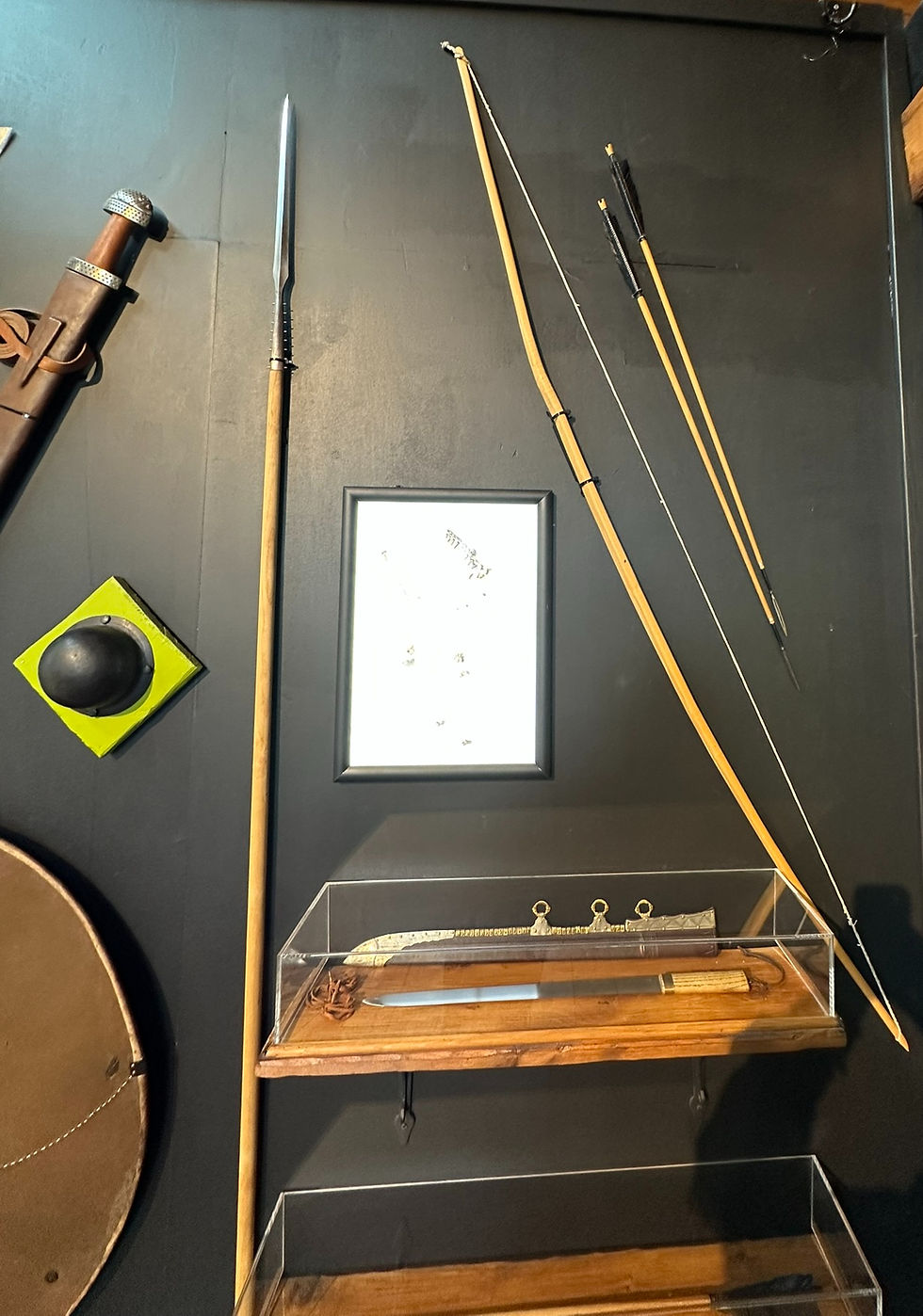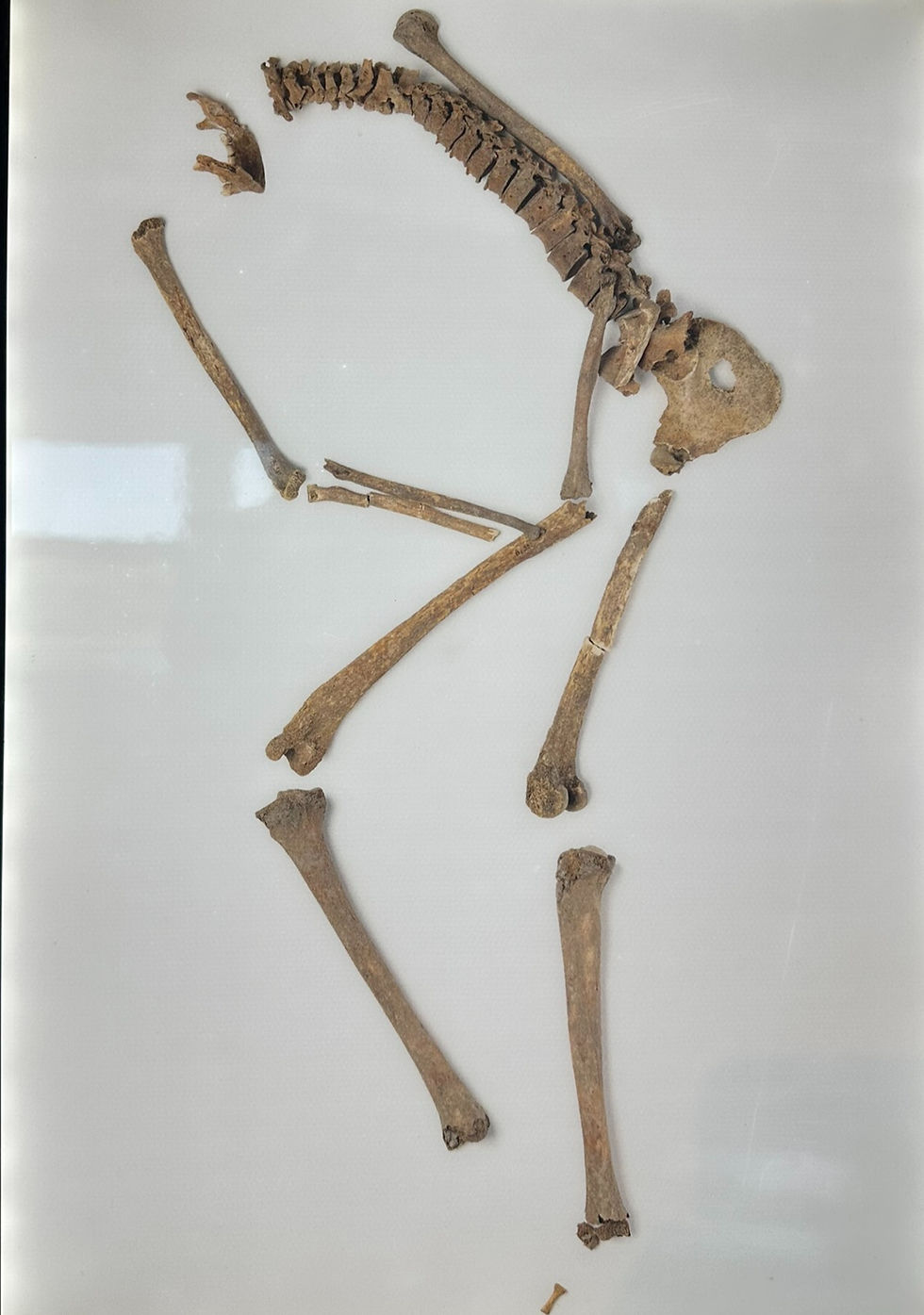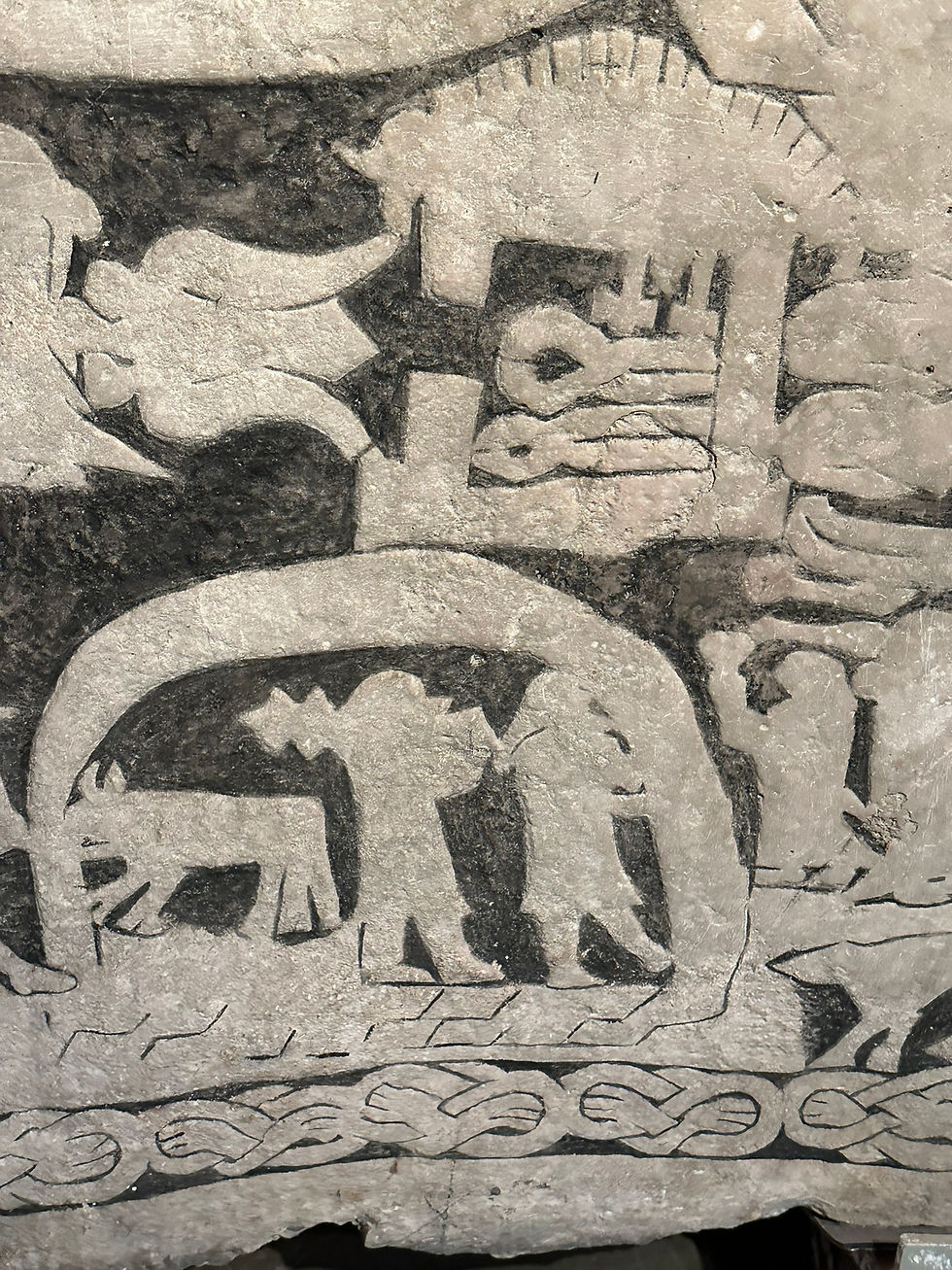THE BIRKA WARRIOR WOMAN: GRAVE BJ 581
- Hrolfr
- Aug 25
- 6 min read
Introduction
The Viking Age trading town of Birka, located on the island of Björkö in Lake Mälaren, Sweden, was one of the most important centers of commerce and cultural exchange in Northern Europe during the 8th–10th centuries CE. Among its many burial sites, Grave Bj 581 has become one of the most significant archaeological discoveries in Viking studies. First excavated in the late 19th century, the grave long stood as a classic example of a high-status warrior burial, believed to belong to a man of great martial renown. However, modern osteological and DNA analysis have since revealed that the individual was in fact biologically female, forcing a reevaluation of assumptions about gender roles in the Viking Age. This is not to suggest that it was common for females to be warriors - yet based on what we have read and researched - we believe it happened.

The Chieftain of the tribe visited Birka in late August 2025 and also the museum there as well as the site of the grave the burial site of the burka woman now known as capital Bj 581. He sat at the burial site a long time and spoke to the spirit of the female warrior to honor her, whether she heard well we don’t know. We hope.

Archaeological Context
Grave Bj 581 was excavated in 1878 by Hjalmar Stolpe during his extensive work at Birka. The chamber grave was located on an elevated position overlooking the town and lake, a location consistent with the resting places of high-ranking individuals. The burial contained an exceptional array of grave goods: a full warrior’s assemblage including a sword, axe, spear, armor-piercing arrows, two shields, and a seax (short sword). In addition, two horses—one mare and one stallion—were interred with the deceased, a common symbol of elite martial status. There were also bridles, a saddle, and a type of hook for a wagon. A gaming set, composed of pieces and dice, was also found, often interpreted as a sign of tactical and strategic knowledge. The richness of the burial and the military equipment led early archaeologists to interpret the grave as that of a male warrior chieftain. The burial is generally dated to the later part of the 10th century CE (950-970 CE).



Interpretations and Scholarly Debate
For over a century, the identity of the occupant of Bj 581 went unquestioned as male. However, osteological analysis performed in the late 20th century indicated female morphology. In 2017, a team led by Charlotte Hedenstierna-Jonson and colleagues published a landmark DNA study confirming the absence of a Y-chromosome, proving conclusively that the individual was female. This revelation ignited widespread debate. Some scholars argued that the presence of full warrior equipment demonstrated that women could indeed serve as professional warriors in Viking society. Others suggested symbolic or honorary explanations, proposing that the grave goods may not directly reflect the woman’s lived experience as a fighter but rather her social role, rank, or family status. Of Birka's 1100 Viking age burials, 75 have weapons, only two have a complete set Bj 581 is one of those and of the highest quality.



Critics of the warrior-woman interpretation argue that the presence of gaming pieces, rather than battlefield injuries, raises questions about the practicality of assuming active combat participation. Nevertheless, the intentional placement of weapons and horses suggests that the occupant was understood by contemporaries to hold a martial identity. The debate remains ongoing but has undeniably challenged traditional gender assumptions about Viking society.


Parallels with the Salme Ship Burial
A significant parallel to Grave Bj 581 can be found in the Salme ship burials in present-day Estonia, dated to the mid-8th century CE. In one of the ships, archaeologists uncovered the remains of dozens of warriors, including a high-ranking individual interpreted as the chieftain. Like Bj 581, this leader was accompanied by a set of gaming pieces, discovered near his head. The presence of such items in both Birka and Salme indicates a shared symbolic association between gaming, strategy, and leadership within Viking warrior culture. The gaming set may have represented the intellectual dimension of command, emphasizing tactical acumen as much as physical prowess. That both a male chieftain at Salme and a female warrior at Birka were buried with these markers of strategic authority strengthens the interpretation that the woman in Bj 581 was intended to be seen as a figure of martial command and leadership, not merely symbolically equipped.

Cultural and Mythological Significance
The discovery of a female warrior burial in such a prominent position resonates deeply with Norse literature and mythology. Old Norse sagas frequently reference shield-maidens, women who fought alongside men, and Valkyries, supernatural figures who selected warriors for Valhalla. While sagas are semi-mythical and not always literal sources, they reflect cultural memory that women could hold martial roles. The Bj 581 burial provides rare archaeological evidence aligning with these traditions. It also underscores the diversity of roles women could occupy in Viking society—from traders and landowners to political leaders and, in this case, potentially warriors.

Conclusion
Grave Bj 581 at Birka represents a watershed moment in Viking archaeology. The burial forces scholars to reconsider the gendered assumptions that have shaped interpretations of the past. Whether the occupant of Bj 581 was an active warrior or a symbolic figure, her grave demonstrates that women could be represented and commemorated within the highest martial elite of Viking society. The grave continues to inspire new research into the complexities of gender, power, and warfare in the Viking Age.
Nancy Marie Brown in her excellent book "The Real Valkyrie: The Hidden History of Viking Warrior Women," also weaves an entertaining tale of the possible life of the female Birka warrior based on archaeology, literature, and the Sagas connecting her at times to Hervor of the "Hervarar saga ok Heiðreks" (The Saga of Hervör and Heidrek).

The remains from Grave Bj 581 at Birka — the famous “female warrior” burial — are housed today in Stockholm, Sweden, under the care of the Swedish History Museum (Historiska Museet / Statens historiska museum).
Bones and skeletal material: The osteological remains from Bj 581 are part of the museum’s archaeological collections. They are stored in climate-controlled archives and are available to researchers by request.

Grave goods: The weapons, horses’ fittings, gaming pieces, and other items excavated by Hjalmar Stolpe in the 1870s are also curated by the Swedish History Museum, some on display, others kept in storage.
So, if you were to visit Stockholm, the Historiska Museet is the place where the skeleton and her grave items are preserved.
Her spirit lingers on Birka though.
Hail the Shieldmaiden of Birka!
Photos by the Chieftain from Birka, the burial site, as well as reconstruction of grave goods and clothing.
Selected Sources:
• Hedenstierna-Jonson, C., et al. (2017). 'A female Viking warrior confirmed by genomics.' American Journal of Physical Anthropology.
• Price, N. (2019). The Viking Way: Magic and Mind in Late Iron Age Scandinavia. Oxbow Books.
• Jesch, J. (1991). Women in the Viking Age. Boydell Press.
• Gräslund, A.-S. (1980). Birka IV: The Burial Customs. Almqvist & Wiksell.
• Gardela, L. (2013). 'The Warrior-Woman in Old Norse Literature and Archaeology.' In Analecta Archaeologica Ressoviensia.
• Konsa, M., Allmäe, R., Maldre, L., Tvauri, A., & Laneman, M. (2009). 'The Salme Ship Burials, Estonia.' Archaeological Fieldwork in Estonia.
• Price, N. (2020). Children of Ash and Elm: A History of the Vikings. Basic Books.



Comments